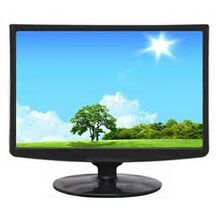Computer Monitor History & Information


Monitors are an essential device in all functioning computers, regardless of their super capability. Either basic or complex, monitors provide a superior quality in computer screens; however, this was not the case in the beginning. When monitors were first produced, plasma screens were not active in the market. Instead, the monitor was used to help indicator lights blink in rows. The first monitor to be used was in a computer was in 1951. Monitors had a dilatory start in production and use until it took a turning point when the first CRT monitors were used. Computer companies in the 80’s were using LCD monitors which were very expensive, and financially inconvenient since their performance were not equally matched with their cost. Though rare, the CRT’s were a better choice.This was a threat for big computer companies that were using LCD monitors. So as the natural competition of marketing commenced, computer companies began to compete by increasing their productivity and efficiency in monitors. LCD monitors won back their momentum. In today’s world, LCD monitors are used in most computer, and are much more advance, coming in large variety.
Monitors are connected to the motherboard of a computer which then sends a signal to that screen in a certain electrical pattern allowing the screen to create an image given by the Monitor and motherboard. Monitors are also connected to VGA cables which is connected to an external Monitor to its computer. In every Monitor, there is a graphics card which has a BIOS. Graphics Cards use GPU which act much like CPU in a computer. The GPU is graphics processing unit. Every Monitor may use a graphics card to customize or improve screen imagery.
For more info on Motherboard, click here.
For more info on CPU, click here.
For more info on Video Cards, click here.
The difference between a CRT and LCD Monitor is that the LCD type- which is most common, uses liquid crystal display- hence its abbreviation. CRT stands for cathode ray tube. The reason why liquid crystal display monitors are most commonly used, is because they can be used in thinner displays that project better quality while consuming less energy in the process. Monitors allow you to see texts, colors, and images in general. LCD and CRT monitors provide high definition display on screens. An advance monitor has to be connected with an advanced computer so that the quality graphics can be displayed equally on a screen that has a large amount of pixels to be able to display its advanced monitor. If a new high-tech monitor is connected to an old computer, and the graphics on the monitor cannot be properly projected on the screen. It’s like a car for instance. When you decided to get bigger wheels, you also have to adjust other things in the car so the car is able to handle the upgraded size.
Monitors continue to become more effective in projecting high definition images through a screen. Though they are old, they won't be replaced anytime soon, only updated.
For more sources go to:
Works Cited
http://computer.howstuffworks.com/monitor.htm
http://computer.howstuffworks.com/monitor1.htm
http://computer.howstuffworks.com/monitor5.htm
https://www.bit-tech.net/hardware/2006/03/20/how_crt_and_lcd_monitors_work/1
By Emiliano Valseca
